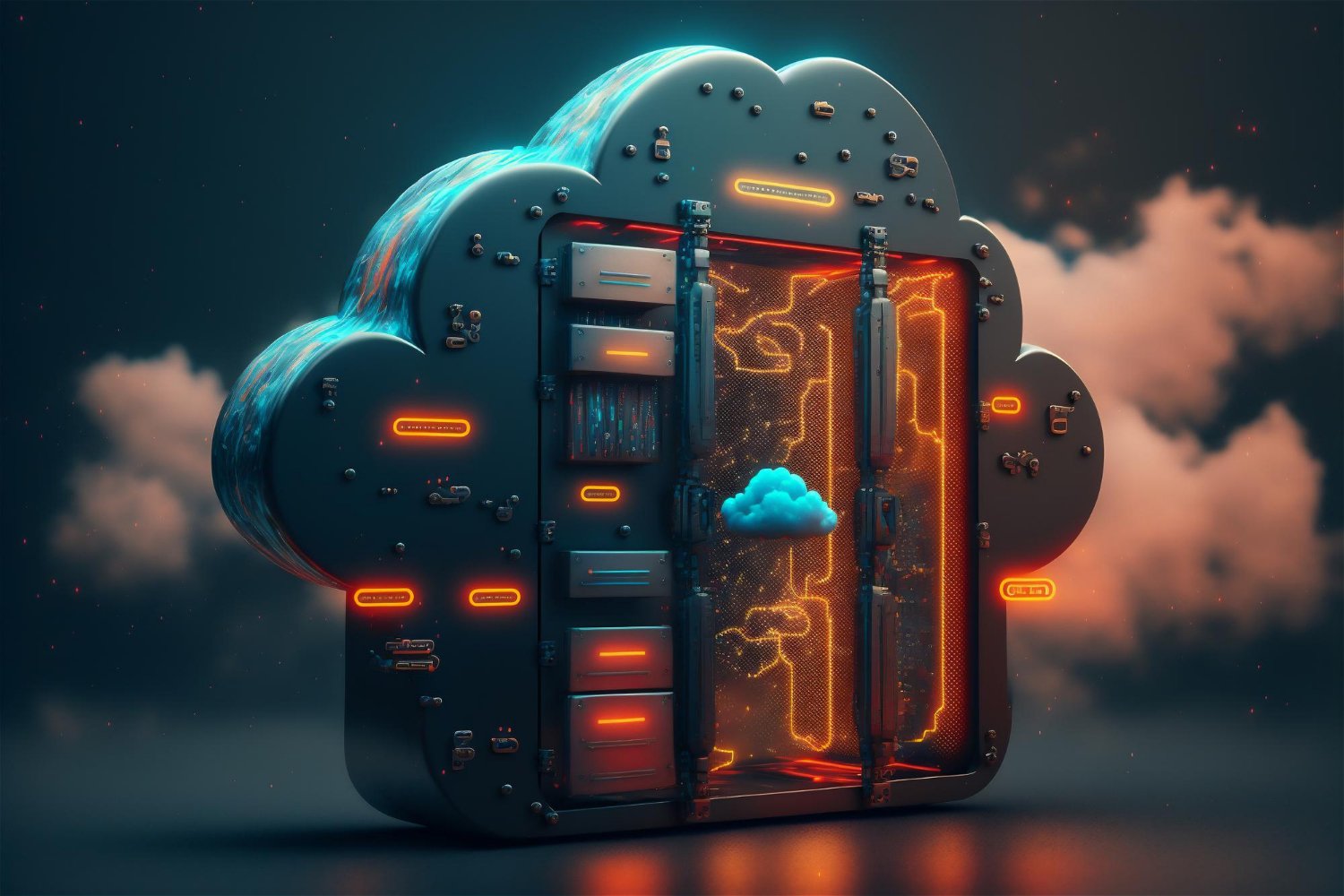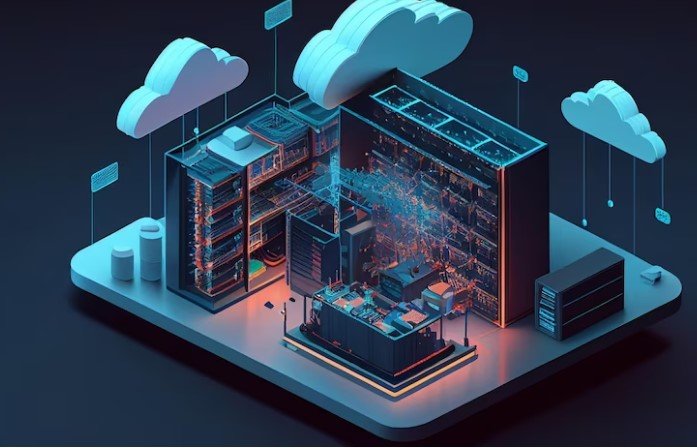
How Does Cloud-Based Server Architecture Embrace IoT Connectivity?
Introduction
The Internet of Things (IoT) marks a revolutionary stride in modern technology, intertwining everyday physical objects with internet connectivity. As the number of connected devices skyrockets, IoT becomes integral to various aspects of life, from smart homes to industrial automation. Parallel to this rise is the growth of cloud-based server architecture, a backbone technology that empowers IoT by offering scalable computing resources and storage solutions.
Understanding Cloud Computing Architecture in IoT
Front-End and Back-End Overview
In the realm of IoT, the front-end encompasses user interfaces and client-side components. This is where users interact with IoT devices, be it through a smartphone app or a web interface. The front-end translates user actions into commands that IoT devices execute.
On the flip side, the back-end of cloud computing is the powerhouse behind IoT, consisting of servers, storage, and data processing units. This is where the bulk of data processing and storage occurs, with cloud servers handling massive amounts of data generated by IoT devices.

Key Elements of Cloud Computing Architecture
User Interface Elements
User interfaces are crucial in IoT, serving as the bridge between users and their connected devices. Cloud architecture supports these interfaces by hosting and managing the applications that IoT devices rely on, ensuring smooth user experiences.
Applications in the Cloud
IoT applications, ranging from smart home controllers to industrial monitoring systems, often reside on cloud servers. This setup allows for flexibility, scalability, and remote accessibility, essential features for modern IoT solutions.
Cloud Services and Functions
Cloud services like Software as a Service (SaaS), Platform as a Service (PaaS), and Infrastructure as a Service (IaaS) play pivotal roles in IoT. SaaS offers ready-to-use software for IoT applications, PaaS provides a platform for developing and hosting these applications, and IaaS supplies the necessary computing infrastructure.
Cloud Runtime Environment
The cloud runtime environment is critical in supporting IoT operations. It ensures that IoT applications run smoothly, providing necessary computing resources dynamically as per the demands of IoT devices and applications.
Data Storage Solutions
Cloud storage is vital for managing the deluge of data from IoT devices. It offers scalable, flexible, and secure storage solutions, enabling efficient data analysis, backup, and retrieval, crucial for IoT systems.
Underlying Infrastructure
The infrastructure powering cloud-based IoT solutions is a blend of physical hardware (like servers and data centers) and virtualized resources. This infrastructure is the foundation that supports the vast network of IoT devices, processing and transmitting data seamlessly.
Operational Management
Managing IoT systems through cloud computing involves monitoring device performance, managing data flow, and ensuring all components work harmoniously. Cloud-based tools and services facilitate these tasks by providing centralized management solutions.
Ensuring Robust Security
Security in cloud computing for IoT is paramount. It encompasses measures like encryption, access control, and regular security updates to safeguard data and protect against cyber threats.
Internet Connectivity and Integration
Cloud architecture plays a pivotal role in facilitating seamless internet connectivity for IoT devices. It enables the integration of different devices and services, ensuring they communicate effectively and work together as a cohesive system. This integration is key to realizing the full potential of IoT, allowing for more sophisticated and useful applications in various domains.
The Role of Cloud Computing in IoT
Cloud computing plays a transformative role in the development and advancement of the Internet of Things (IoT). Its significance lies in providing a robust, scalable, and efficient infrastructure that enables IoT devices to deliver their full potential.
Unlocking Remote Computing Capabilities
One of the most significant advantages of cloud computing in the context of IoT is the ability to enable remote access and control. This functionality is crucial for IoT systems as it allows for the management and monitoring of devices from any location. Cloud computing provides a centralized platform where data from various IoT devices can be collected, processed, and accessed remotely. This capability not only enhances convenience but also improves the efficiency of operations, especially in industries where real-time monitoring and control are essential.
Strengthening Security and Ensuring Privacy
Security and privacy are paramount in IoT systems due to the sensitive nature of the data they handle. Cloud computing addresses these concerns by offering advanced security features that protect data from unauthorized access and cyber threats. These features include encryption, access control, and regular security updates. Moreover, cloud providers often adhere to strict privacy regulations, ensuring that data is handled and stored securely, thus maintaining user trust and compliance with legal standards.
Optimizing Data Integration and Analysis
The integration and analysis of vast amounts of data are where cloud computing truly shines in the realm of IoT. IoT devices generate enormous volumes of data, and cloud platforms provide the necessary computational power and storage capacity to handle this data efficiently. Advanced analytics and machine learning algorithms, often part of cloud services, can process and analyze this data to extract valuable insights, leading to more informed decision-making and predictive maintenance in various sectors.
Promoting Flexibility with Reduced Hardware Needs
Cloud computing significantly reduces the need for extensive hardware in IoT setups. Traditionally, large-scale data processing and storage require substantial on-site infrastructure. However, with cloud computing, much of this burden is shifted to the cloud, allowing IoT systems to operate with minimal hardware. This shift not only reduces costs but also enhances scalability and flexibility, as businesses can easily adjust their cloud resources according to their changing needs.
Guaranteeing Continuous Business Operations
Continuity in business operations is a critical concern, and cloud-backed IoT solutions play a vital role in ensuring this. The cloud provides a reliable and resilient infrastructure that can sustain IoT operations even in the event of local hardware failures. This reliability is crucial for mission-critical applications where downtime can have significant consequences.

Enhancing Device-to-Device Communication
Cloud computing also improves communication between IoT devices. By serving as a central communication hub, the cloud enables seamless data exchange between devices. This enhanced communication is essential for the synchronization of operations and for maintaining the integrity of the IoT ecosystem.
Boosting Quick Data Processing and Response
Finally, the role of cloud servers in accelerating data processing and response times in IoT cannot be overstated. Cloud computing provides powerful computational resources that can quickly process large volumes of data generated by IoT devices. This rapid processing capability is vital for applications that require immediate response and action, such as emergency response systems or real-time asset tracking in logistics.
Challenges Faced by Cloud Computing and IoT Integration
Integrating cloud computing with IoT presents a unique set of challenges that are crucial to address for ensuring a seamless operation. These challenges are not just technical but also involve managing data, navigating network complexities, and effectively utilizing sensor networks.
Managing the Overflow of Data
One of the primary challenges in the IoT ecosystem is the sheer volume of data generated by a multitude of devices. Cloud computing architectures play a pivotal role in handling this data deluge. The key lies in developing advanced data processing strategies that are capable of sifting through vast amounts of data in real-time, extracting actionable insights, and discarding redundant data. This requires not only robust cloud storage solutions but also intelligent algorithms that can prioritize data based on relevance and urgency. The cloud’s scalability is a significant advantage here, allowing systems to expand their storage capabilities as the data influx increases.
Addressing Complex Network Structures and Communication Standards
IoT devices operate within complex network structures, often requiring them to communicate across various protocols and standards. The integration of cloud computing into this landscape necessitates an architecture that is flexible and adaptable to these diverse communication needs. This complexity is managed by implementing middleware and standardization protocols within the cloud infrastructure. These protocols act as translators, ensuring seamless communication between devices with different languages. Additionally, the cloud’s centralized nature allows for the efficient management of these network structures, providing a singular point of control for the entire IoT network.
Utilizing Sensor Network Effectively
Sensor networks are the backbone of IoT systems, collecting data from the environment. Cloud computing enhances the capability of these sensor networks by providing advanced analytics and processing power. However, the challenge lies in effectively managing these networks to ensure they are not only transmitting data efficiently but also doing so in a way that minimizes energy consumption and maximizes functional longevity. Cloud architectures address this by implementing smart algorithms that can determine the optimal frequency of data transmission and processing, based on the criticality of the information and the current network load.

Conclusion: The Intersection of IoT and Cloud Computing Architectures
In conclusion, the symbiosis between IoT and cloud computing is not just inevitable but also essential for the advancement of modern technology. This intersection brings together the vast potential of IoT devices with the immense processing and storage capabilities of the cloud. It’s a partnership that enables more intelligent, efficient, and scalable systems, capable of handling the increasing demands of a connected world.
The future of this integration is promising, with continuous advancements in cloud computing technologies like edge computing, which aims to bring data processing closer to where it is needed, thus reducing latency. As these technologies evolve, we can expect IoT systems to become more autonomous, secure, and capable of handling increasingly complex tasks, ultimately leading to a more connected and intelligent world.

As a seasoned professional with a unique blend of skills in Computer Design and Digital Marketing, I bring a comprehensive perspective to the digital landscape. Holding degrees in both Computer Science and Marketing, I excel in creating visually appealing and user-friendly designs while strategically promoting them in the digital world.

